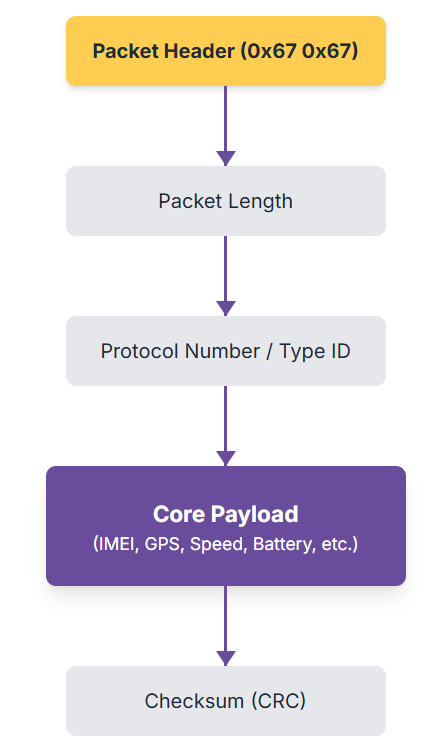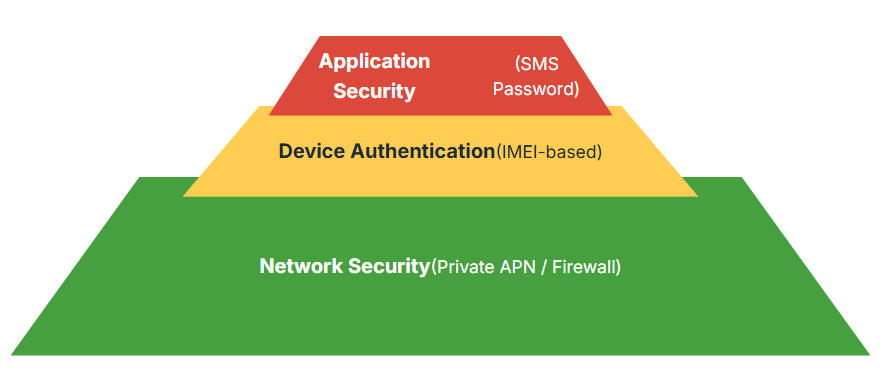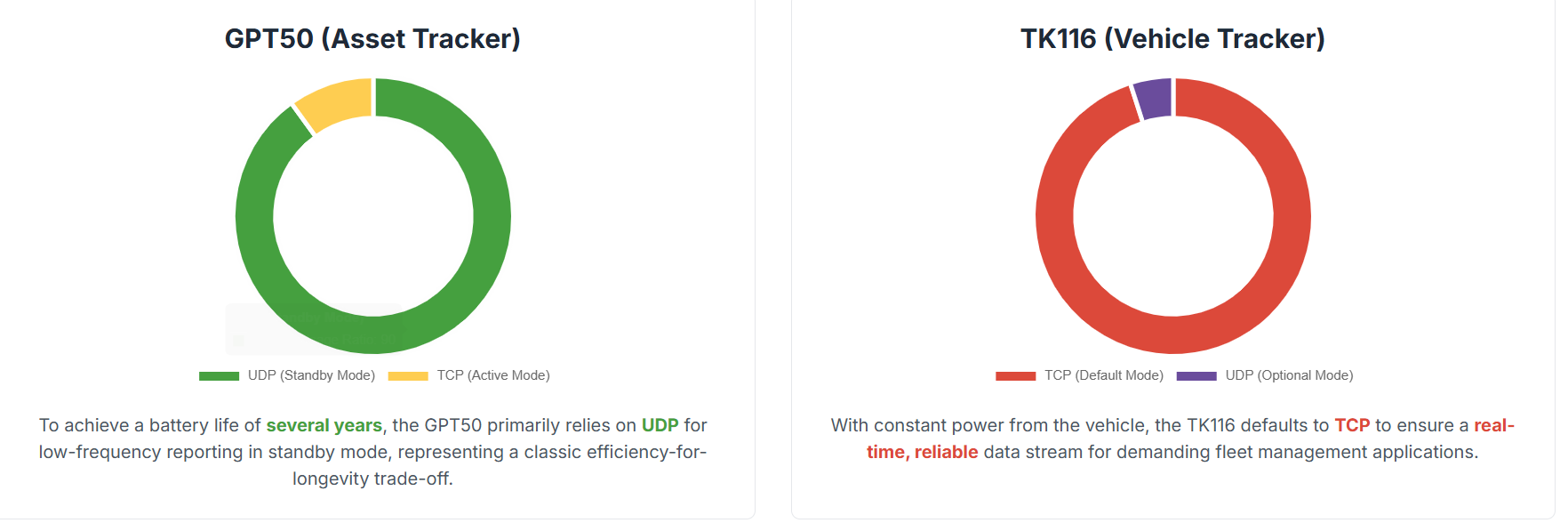A Deep Dive into Eelink’s Communication Protocols

Eelink devices leverage multi-protocol connectivity (TCP / UDP / SMS / MQTT) to deliver real-time asset-tracking data across worldwide logistics networks.
Eelink’s Core Communication Philosophy
Eelink’s core strategy revolves around a proprietary binary protocol, transmitted over TCP or UDP. This approach deliberately prioritizes data efficiency and compactness over native adoption of standard IoT protocols like MQTT.
This design choice introduces a key trade-off: lower data costs and power consumption from optimized packets, in exchange for the need for specialized decoding and integration on the server side. This infographic unpacks each layer of this ecosystem.
Protocol Ecosystem Comparison
Eelink utilizes a multi-faceted approach. Below is a comparison of the different communication methods and their roles within the ecosystem, rated on a relative scale from Low (1) to High (10).

Eelink over TCP: Best for real-time, reliable data streams when power is not a primary concern (e.g., vehicle trackers).Eelink over UDP: Ideal for low-power, long-life battery devices where efficiency is paramount (e.g., asset trackers).SMS Channel: A vital, low-bandwidth control plane for configuration and fallback, not for primary data streaming.
MQTT (via Gateway): The bridge to modern IoT. Not native on the device, but enables cloud integration and interoperability at the platform level.
Decoding the Eelink Proprietary Protocol
For maximum efficiency, Eelink uses a compact binary protocol. A typical message packet follows a clear structure to minimize data payload.

When using UDP, the entire Eelink packet is encapsulated and prepended with the device IMEI, as the server needs to know the origin of each stateless datagram.
The Security Model: A Layered Approach
The Eelink protocol itself does not provide end-to-end encryption, instead offloading security responsibility to the network and application layers in a “defense-in-depth” strategy.

Externalization of Security
Data transmitted over TCP/UDP is unencrypted by default. This design choice simplifies device firmware, reducing cost and power consumption.
The overall solution’s security therefore becomes highly dependent on the deployment environment. Protecting data in transit is achieved by using a Private APN to isolate devices from the public internet or by Firewalls restricting access to the server.
This is a significant trade-off: implementation simplicity in exchange for robust network security measures that must be built by the solution provider.
The Integration Bridge: Connecting to the Modern IoT World
Eelink devices do not natively support standard protocols like MQTT, but they are not islands. Through middleware platforms, their data is seamlessly translated into standard formats for major cloud platforms.

This model pushes “IoT intelligence” to the server/cloud, allowing Eelink to focus on optimizing hardware and core communication while leaving complex integration to specialized platforms.
Device Spotlight: The Protocol in Action

